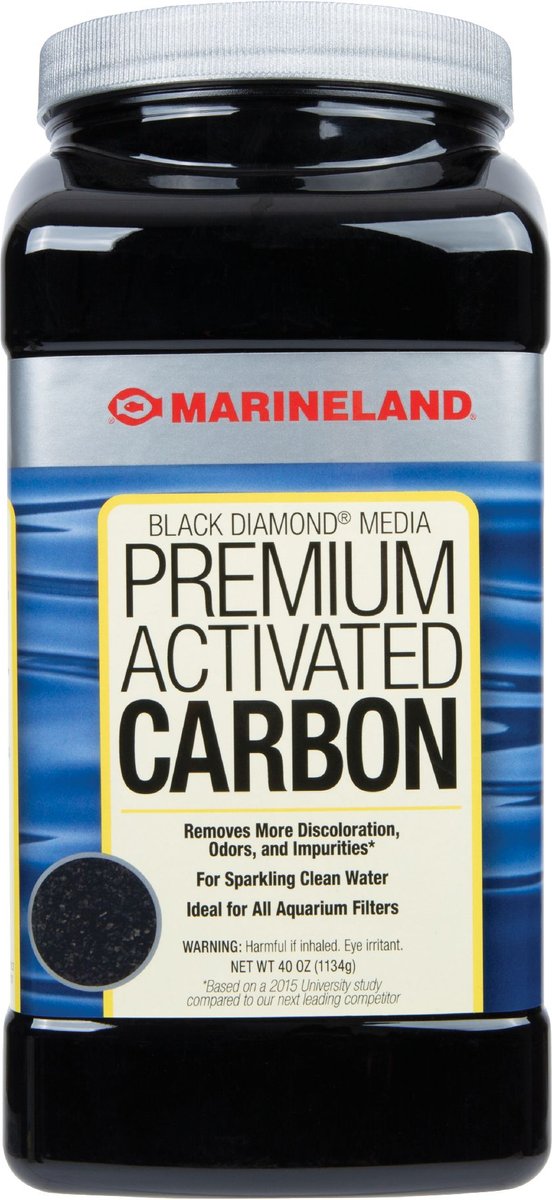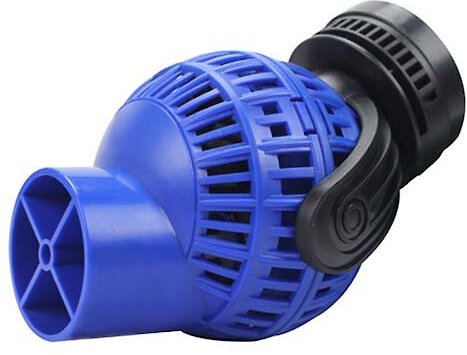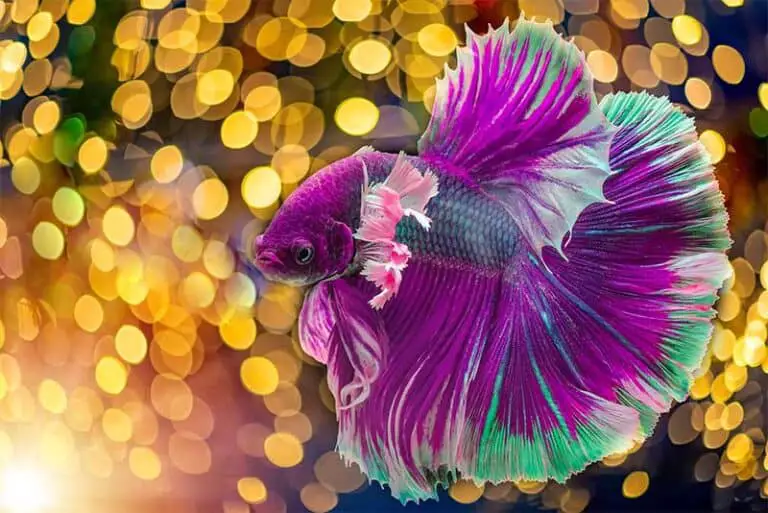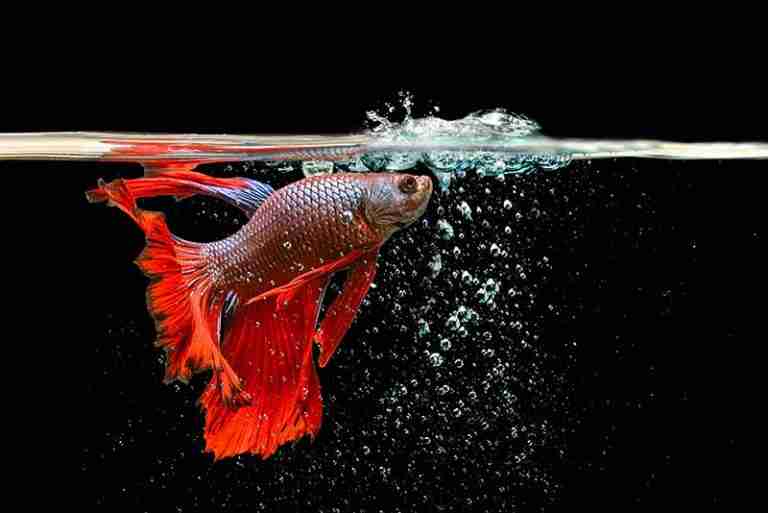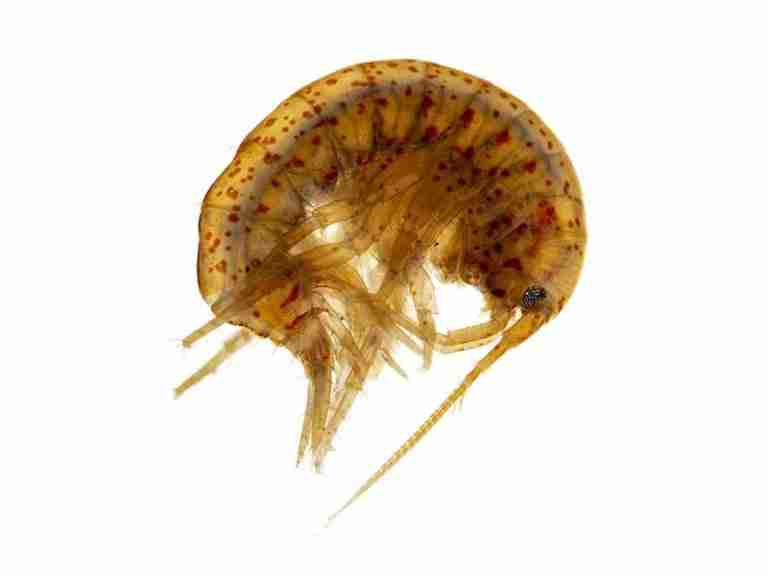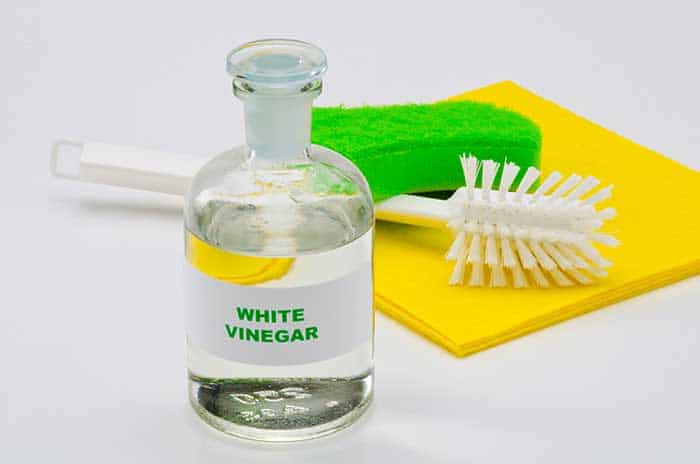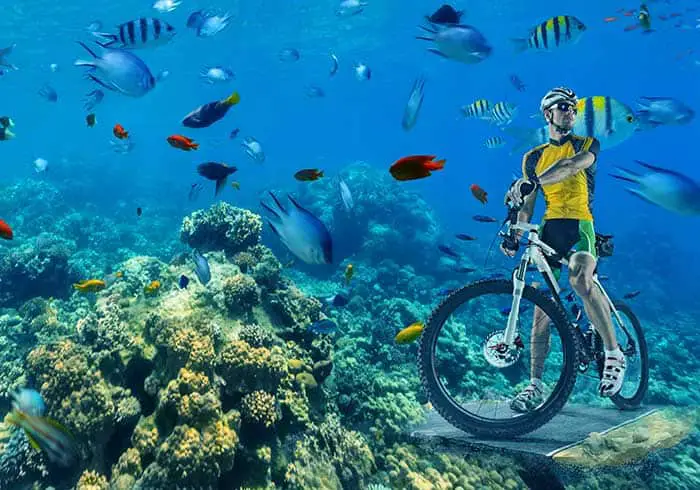How To Get Fish Tank Water Crystal Clear (It’s Easy!)
Having crystal clear water in your fish tank is the holy grail of fishkeeping. Not only is it aesthetically pleasing, but it’s also important for the health of your fish. Unclean water can cause a build-up of toxins and harmful bacteria, putting your fish at risk.
So if you want to learn how to get fish tank water crystal clear, read on, and I’ll explain the causes of cloudy fish tank water and the steps you should take to fix it. I’ll also give my best tips on how to keep fish tank water clear.
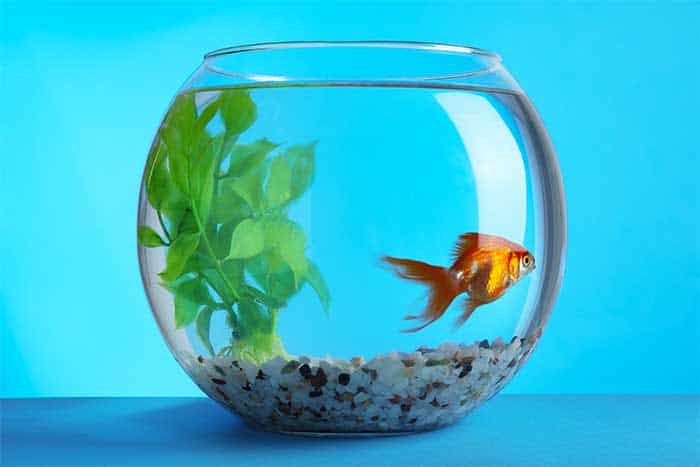
Why Is My Fish Tank Water Cloudy
Fish tank water can become cloudy or dirty for several reasons, so if you want to get your fish tank water crystal clear, the first step is to identify the reason why it’s cloudy in the first place.
Some of the most common reasons for cloudy water are:
- Dirty tank glass.
- Bacterial blooms.
- Algae Blooms.
- Organic and inorganic particles are suspended in the water column.
- Water Is Very Hard And Mineral Rich
As you can see, many different reasons could be causing your fish tank water to become cloudy.
Let’s take a closer look at the above causes and why they can contribute to a cloudy tank.
Dirty Tank Glass
Although it may seem obvious, many people don’t realize that the glass of their fish tank has become dirty.
A build-up of dirt, algae, other organic matter, or hard water stains on the glass of your fish tank can cause the water to appear cloudy. This is because the particles suspended in the water will reflect, making it appear as if the water is cloudy.
You may have a greasy white film on the inside of your glass which can appear cloudy when looking through it. A greasy white film can be caused by a build-up of fish waste, oils, and other organic matter.
Cleaning your tank glass with a magnetic glass cleaner every day or so will only take a few minutes and will stop any algae or dirt from building up.
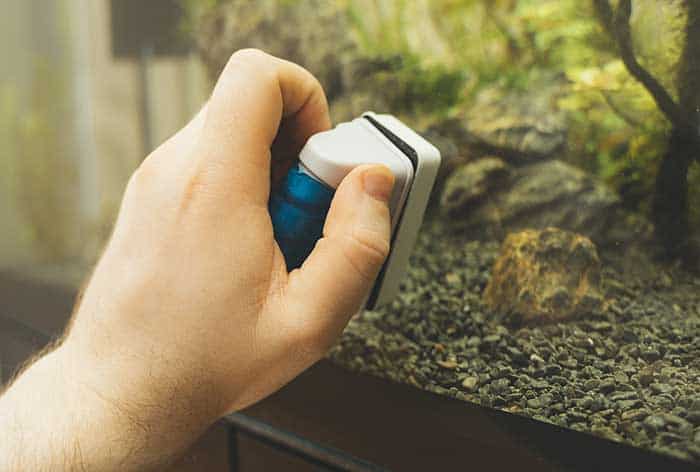
Bacterial Blooms
Bacterial blooms are common in fish tanks, and they are a sign that your tank is cycling. Cycling a fish tank is the process by which beneficial bacteria build up and establish a colony.
These beneficial bacteria are essential as they help break down ammonia, nitrites, and other harmful toxins in your water.
During the cycling process, you may notice that your water becomes cloudy or dirty because there is an increase in the number of bacteria in the water.
If your tank is regularly cloudy because of bacterial blooms, it may be caused by irregular feeding habits or too many large water changes.
When you suddenly increase the frequency that you feed your fish, they will begin to produce more waste, and there will be more food waste in your tank, rotting away. At this point, ammonia and nitrite levels will start to increase, resulting in a sudden growth of the bacteria required to lower ammonia levels and bring it under control.
If your aquarium is cloudy after a water change, you may be removing too much of the good bacteria that has established itself in the tank. You must retain as many beneficial bacteria as possible when performing water changes.
Algae Blooms
Algae blooms are another cause of dirty or cloudy-looking fish tank water. Algae are a type of plant that can grow in both fresh and salt water.
Green water in a fish tank is a sure sign of algae blooms, but they can also appear as brown misty water, dependent on the type of algae that is growing.
Algae blooms can be caused by many different things, including:
- Too much light.
- Excess nutrients.
- Poor water quality.
Algae thrive in tanks that receive a lot of light, so if your tank is in a sunny spot or has intense artificial lighting, this could cause your algae to bloom.
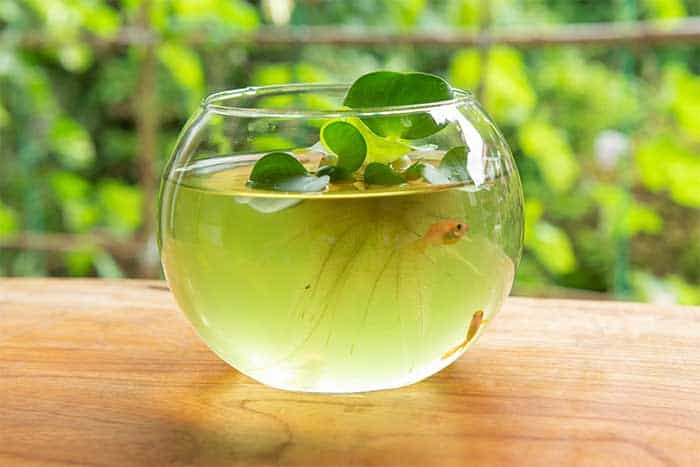
Algae also need nutrients to grow, so if your tank water is high in ammonia, nitrites, or phosphates, this can also cause an algae bloom.
Finally, poor water quality can also lead to an algae bloom. If your tank water is not adequately filtered or aerated, this can cause algae to grow out of control.
Organic And Inorganic Particles
Fish tank water can hold a lot of dissolved substances, including minerals, salts, and other organic and inorganic particles.
As these tiny particles are suspended in the water, they can cause the water to appear cloudy, often with a milky white appearance.
If you have driftwood in your tank or Indian Almond Leaves for their antibacterial qualities, tannins can be drawn into the water, appearing brown and cloudy.
You Are Using Hard Water
There are many different types of water that you can use in a fish tank, each with its own characteristics. Hard water is one example, as it contains lots of minerals, and metals, some of which are essential to fish health, and others are very toxic.
A suitable water conditioner will generally remove all harmful chemicals and metals, although very hard water can appear quite cloudy due to excessive mineral content, which isn’t necessary for most fish.
There are many ways that you can soften aquarium water which you can read about here: How to soften aquarium water (Quick and easy solutions).
If you are struggling to find the best water for your fish tank you should read this article: Distilled Water For Fish Tank (The Good and the Bad).
Another article I would consider useful is: What Water To Use For Betta Fish (Benefits & Drawbacks).
How To Get Fish Tank Water Crystal Clear
Now that you understand many of the causes of cloudy water, we can look at how to get aquarium water crystal clear so that you can enjoy an uninterrupted view of your beautiful fish.
Most of the causes of cloudy water are not harmful to your tank, even though some can indicate poor water quality. If you can identify which problem is causing your cloudy water, you can take the necessary steps to fix it.
The following are some tips on how to get crystal clear fish tank water:
- Clean your aquarium filter.
- Use activated carbon (also known as activated charcoal).
- Change your aquarium water regularly.
- Turn your fish tank light off and avoid strong sunlight.
- Don’t overfeed your fish.
- Avoid overcrowding.
- Introduce algae and waste-eating fish.
- Use a wave maker.
- Use an aquarium water clarifier.
By following the above, you should have crystal clear fish tank water in no time. So let’s look at how and why each tip should work.
Clean Your Filter
There are three main types of filters in an aquarium, mechanical filtration, biological filtration, and chemical filtration. A good quality filter will contain multiple filter layers, usually consisting of all three, but you can usually add extra filtration layers to cheaper filters through the use of ready-made pads or filter media bags.
Mechanical filtration generally deals with filtering out large impurities, such as food waste and poop, while chemical filtration binds to small impurities, making them larger and easier to trap. Biological filtration is where bacteria convert harmful chemicals such as ammonia into less harmful chemicals like nitrates.
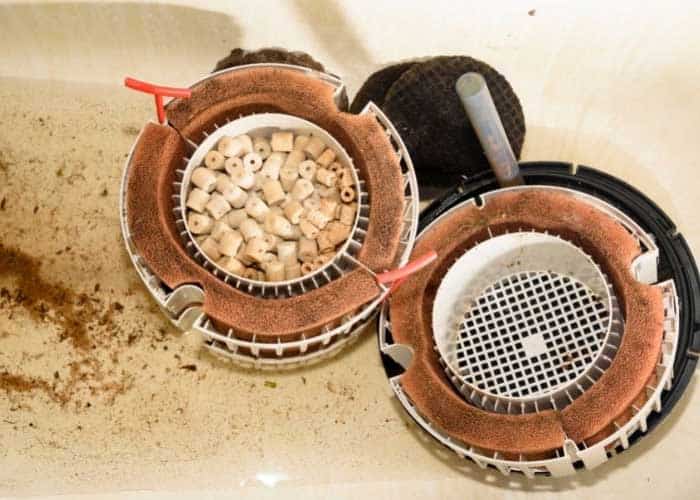
Maintaining a good filtration system is one of the most important things you can do if you want to get crystal clear aquarium water. A good filter will help remove excess waste, uneaten food, and other debris from your water.
It is essential to regularly clean your filter media to prevent it from becoming clogged and ineffective. Some filters will have an indicator light that will tell you when it is time to clean the filter, but a regular cleaning schedule is best.
Quick Tip
Clean your filter when you change your tank water. You can rinse the filter media and sponges in a bucket of old tank water (before you throw it away), or rinse it under hot tap water. Give it a thorough rinse in a bucket of the old fish tank water to retain some of the benificial bacteria that has been washed away..
Large amounts of beneficial bacteria grow within your filter media, and rinsing under a hot tap washes it away.
Beneficial bacteria are known as biological filters, and many mechanical filters have a layer specifically for them to grow in, although bacteria grow anywhere, including the inside of your sponge filter.
You should also check your filter to ensure the flow rate is not too high. If the flow rate is too high, it can cause turbulence in the water and make the tank appear cloudy.
Use Activated Carbon
Activated carbon, also known as activated charcoal, is a form of chemical filtration commonly used by experienced fish keepers that understand its benefits. Chemical filtration is anything that alters the chemical makeup of the water to allow for better filtration.
Activated carbon has positively charged particles that cause particles with a negative charge to bind with it. Placing a carbon pad in your filter is best as it will interact with the particles that pass through, removing them from the water.
Many filters already have a layer of activated carbon, but if you have a smaller or cheaper filter, you can buy activated carbon filter pads, or you can buy activated carbon and a separate chemical media filter bag that can be placed inside the filter housing by hand. Make sure you don’t obstruct the flow of water when you do this.
What I Use
If you want to try activated carbon pads for your filter, I can recommend the following:
Marineland Black Diamond Activated Carbon Filter Media (Check Price On Amazon & Chewy)
Aquarium Mesh Filter Media Bags For Carbon/Charcoal (Check Price On Amazon & Chewy)
Aquatic Experts – Premium Activated carbon With Mesh Media Bag (Check Price On Amazon & Chewy)
Change Your Water Regularly
Another important thing you can do to keep your water clean and clear is to perform regular water changes. Water changes help remove excess waste and debris from your tank and replenish it with fresh, clean water.
How often you need to change your water depends on your tank size and the number of fish you have. A good rule of thumb is to change 10-20% of the water every week or two when you do a tank clean.
Be sure to remove chlorine and other chemicals when adding new water to your tank. You can remove these chemicals with a good water conditioner such as Brightwell Aquatics Erase CL Water Conditioner (Check Price), or API Tap Water Conditioner (Check Price).
Chlorine is not only toxic to fish, but it will also kill the beneficial bacteria colonies that have formed in your tank, causing a massive bacterial bloom as they try to re-establish themselves.
You should also use a gravel vacuum or siphon to thoroughly clean all of the trapped food waste from your substrate.
Turn Your Fish Tank Light Off
Many people make the mistake of leaving the fish tank light on all night, but fish don’t need light at night, and they certainly wouldn’t have it in the wild.
Too much light can cause algae growth. All plant life, including algae, requires light during the day for photosynthesis and a period of darkness.
Algae growth is easy to spot as you will notice cloudy green water. If you have cloudy brown water, it may be a brown algae bloom or another chemical like tannins. Excess algae can even make your aquarium water look like pea soup.
Algae is very sensitive to light, and too much of it can cause large algae blooms, especially when mixed with the right nutrients, such as the phosphates released from rotting food waste.
Strong sunlight can also cause algae blooms, so if your tank is near a window, make sure to block out the light with curtains or blinds.
You should only leave the fish tank light on for 8-12 hours per day. Many people like to use a timer to automate this process.
Don’t Overfeed Your Fish
Overfeeding your fish can cause excess food waste and fish waste, contributing to an ammonia spike and bacterial blooms.
In general, you should only feed most fish once or twice per day and only provide them with an amount that your fish can consume within two minutes. Uneaten food will fall to the bottom and begin to rot away, producing the same chemicals that can cause bacterial and algae blooms.
One good practice is to fast your fish for one or two days a week. This won’t harm most aquarium fish and is beneficial to their digestive systems. I prefer to feed my fish from Monday to Friday but not on the weekend, whereas some prefer to have two days of feeding and one day of fasting.
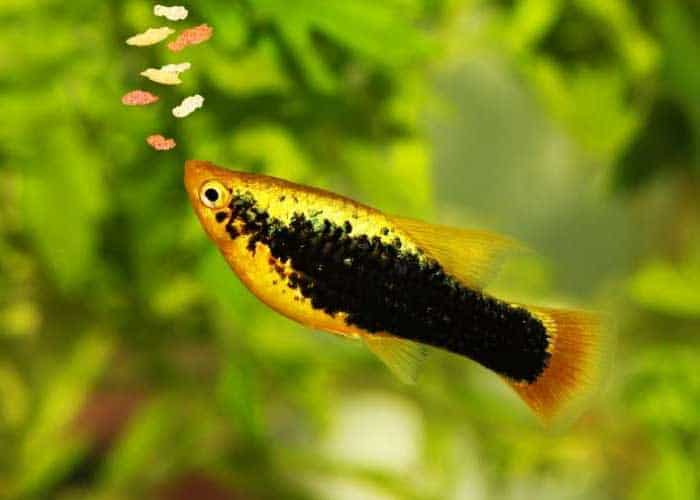
Fasting allows a fish’s digestive system to relax and clear to avoid bloating and constipation. Also, your fish will continue to search for food waste that has settled at the base of the tank.
Don’t Overcrowd Your Tank
Allowing your fish tank to become overcrowded with fish and other aquatic life will eventually cause several problems. Overcrowded tanks produce excessive waste and a lack of oxygen and quickly become dirty.
Aquarists follow specific rules, such as the potential size of your fish species when fully grown will dictate the required tank space it will need.
An example rule is that for every 1 inch of fish size, you will need 1 gallon of water, so for 10 fish that will each measure 2 inches when full grown, you will need 20 gallons. I always add to this rule by starting with 5-10 gallons to allow for heaters, filters, and ornaments.
Many inexperienced aquarists do not have the space or money for a large tank but want as much variety in fish species as possible, which will always cause problems in the end.
Overcrowding contributes to cloudy water and can also cause your fish to suffocate as they compete for the small amount of oxygen available to them. Infections and parasites can also spread quickly and become hard to treat.
Introduce Algae And Waste Eating Fish
Many fish species will act as a clean-up crew by eating leftover food waste and algae that has settled on glass, rocks, and ornaments.
Some of the most common cleaning fish are Siamese Algae Eaters, Plecos, and some loaches. Although these fish won’t completely eradicate the problem, they will certainly help.
Use A Wavemaker
Wavemakers are used to create extra movement in your aquarium water which not only helps create surface agitation to help oxygenate your tank water but also creates more movement in the water to stop waste particles from settling on the bottom.
Most tanks have dead spots with little or no current, and this is where the waste will usually accumulate. A wavemaker will reduce these dead spots, continually pushing waste and fine particles toward your filter.
Wavemakers are more commonly used in saltwater tanks to create a stronger current and waves which mimic the ocean. If you are going to use one in a freshwater tank, it will be better suited to larger tanks where the filter cannot easily reach.
Wavemakers come in different sizes and power outputs, with the below example being a smaller model suitable for a 60-80 gallon tank.
Use A Water Clarifier
Although some aquarists don’t like adding chemicals to their fish tank, many swear by water clarifiers. A good quality commercial water clarifyer can give your water the extra kick it needs to become crystal clear.
Water clarifiers work by neutralizing fine particles in the water by binding to them where they will fall to the bottom or become large enough to become trapped in your filter. Because water clarifiers are basically altering the water chemistry, they can be considered a means of chemical filtration like the active carbon discussed earlier.
If your cloudy water is caused by excess particles suspended in the water, a good water clarifyer may be the answer to your problems. I have used clarifiers on stubborn tanks in the past and recommended them to other fishkeepers, all with satisfying results.
One of the best fish tank water clarifyer that I can recommend is Fritz Aquatics Water Clarifier (Check Price On Amazon & Chewy).
How To Keep Fish Tank Water Crystal Clear
By following the explanations and tips provided in this article, you should now understand what causes cloudy water, and with any luck, you should now have crystal-clear aquarium water.
Getting crystal-clear aquarium water is not easy, so you will want to maintain it. Keeping your aquarium crystal clear is not difficult if you avoid the most common causes of cloudy water.
Develop a complete cleaning and maintenance schedule for your fish tank and stick to it. Your routine should include regular water changes, the substrate’s vacuuming, and cleaning the filter.
Stick to a solid feeding regime for your fish and avoid overfeeding, which can affect water clarity.
Keep on top of algae growth by regularly cleaning the glass and surfaces where it has become attached.
If you notice slight cloudiness or green water, even when following this guide, add a little water clarifier to bring it quickly under control.
To finish up, I found this great video on Youtube, which takes you through many of the processes I have discussed, with a few added tips to get crystal-clear aquarium water.
Wrap Up
Hopefully, this guide has helped you understand why your water can quickly become cloudy, despite your best efforts at cleaning. In fact, sometimes your actions can cause the problem, especially when maintenance is carried out incorrectly.
The biological processes that are happening in your tank right under your nose are an essential part of the nitrogen cycle, and you should not be too disheartened if your fish tank water becomes a little cloudy from time to time.
By following these simple tips, you should have no problem keeping your fish tank water crystal clear. Good luck!


